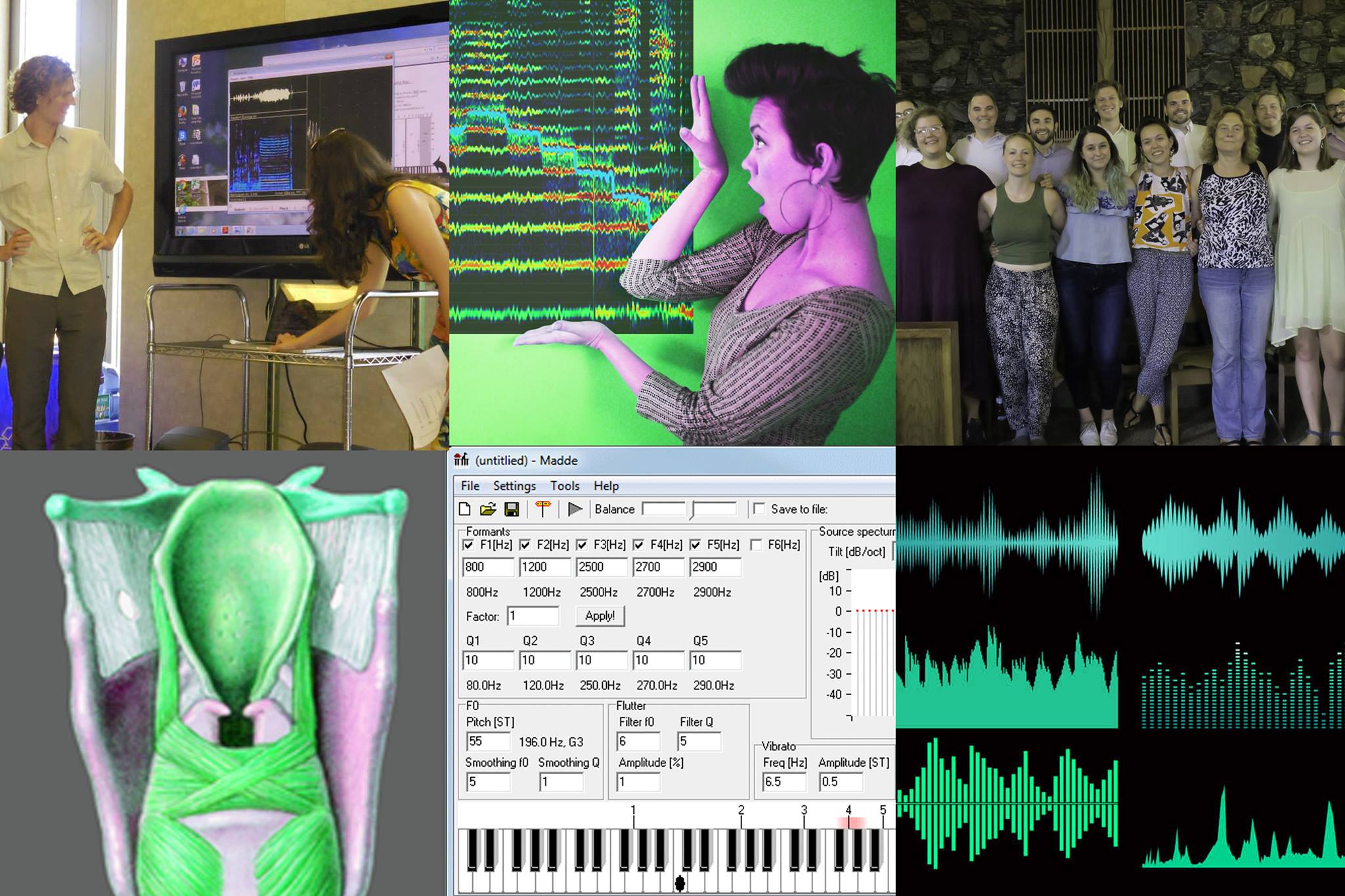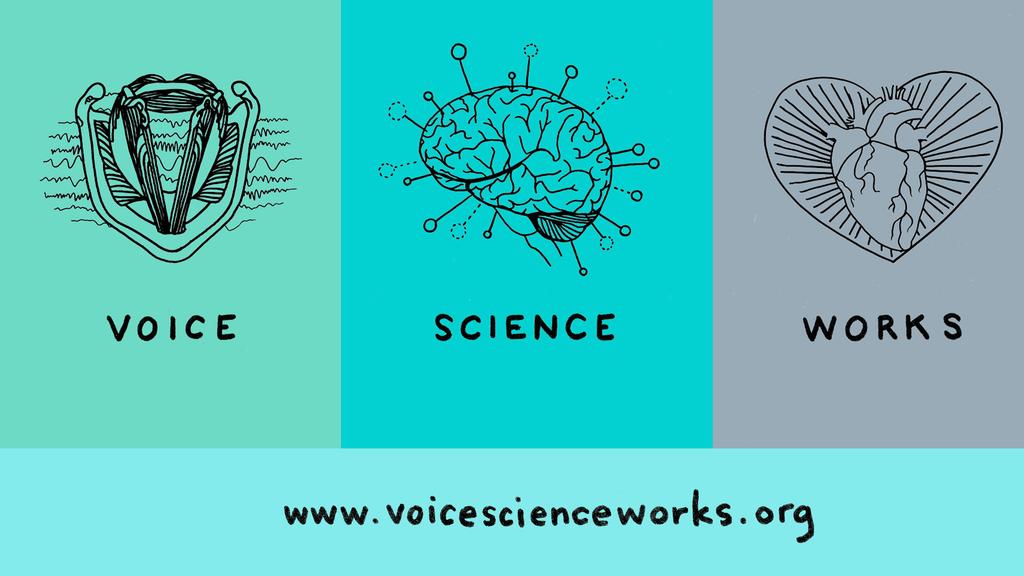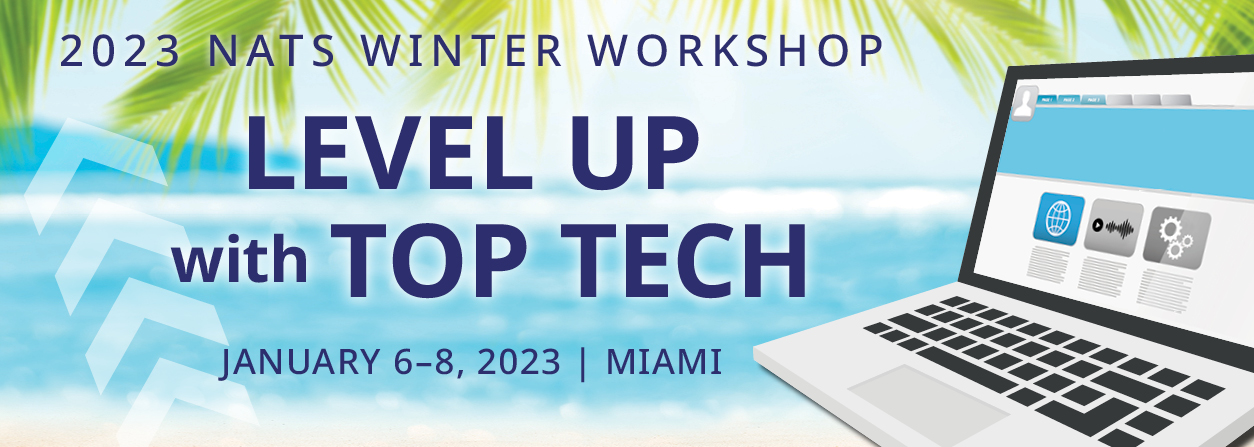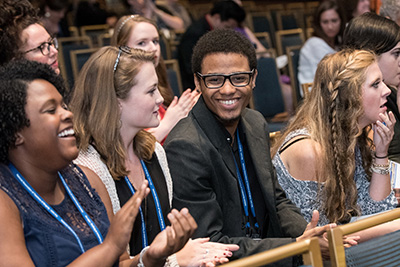What's New > Explore a ‘rainbow of sound’ with Laurel Irene and David Harris
 |
Laurel Irene and David Harris
|
Laurel Irene and David Harris are leading three sessions at the 2023 NATS Winter Workshop in Miami, January 6-8, including: “How Technology Gives Us The Rainbow;” “Your Voice, Your Choice;” and “Compassionate Leadership Through Technology.”
We’re so happy you two will both be joining us for the upcoming NATS Winter Workshop. Walk us through what attendees can glean from your sessions.
We are equally happy to be joining you in Miami to share in the vital work that NATS does for singers and teachers across the country.
Our work as vocologists, with VoiceScienceWorks, and in our individual practices as vocalists, composers and teachers/ensemble leaders centers around a belief that singing is a unique gift that all people have access to, and that whatever sounds we want to make with the gift of voice are available to us to explore. We also hold to the ideas that if we can understand how the voice functions and the body learns, we can create auditory guides to teach the voice to create specific aspects of sound and functional habits to teach the body outside of the “thinking” barrier. We can approach vocal exploration compassionately — vocalists have profound capacity to shape and hone their vocal identity and toolkits. Traditional methodologies created structure around vocal learning and shared a passion for the voice that acknowledged its complexity and brilliance. Yet, in attempts to explain complexity, they too often lean on black and white explanations (head/chest, dark/bright, etc.) and a belief that people are one voice type or style (soprano, bass, etc., classical, RnB, etc.).

Voice science has created new opportunities for learning and understanding voice function and cutting through complication while allowing it to remain complex and diverse. Yet, it can also create a scenario where people feel that they have one more reason to be wrong about something, or, simply be used to reinforce the dichotomies of old with new language. Research into compassion reveals that when we allow that everyone suffers (including ourselves), and strive to alleviate that suffering, we grow closer to one another, feel trusted and supported, and make new learning strides together with greater ease.
In our experience, compassion is often the missing link between what people used to say and what we are trying to discover today. Compassion lifts the burden of judgment from our curiosity, and allows us to ask new questions without fear of retribution. We need our past luminaries to inspire us just as we need new ways of thinking to shape our new goals, and, we need the benefit of motivations like compassion and curiosity to remind us that we are human and that singing is about as human an activity as one can find. When we learn to lead with the passion of tradition influenced by the clarity of science, and wrapped in the connecting power of compassion, we find ourselves working lighter, playing more often, and discovering life through song.
Technology creates avenues into compassionate communication by leveling the playing field and nurturing communication directly to the body, past the “thinking” barrier. Through filtered listening through technologies, the ear quite simply teaches the voice, and everyone in the room has equal access to the same information, deescalating the teacher’s pressure to know things and the student’s fear that they know nothing. Technology can quite simply give us direct access to the rainbow of sound that is our voice. Once we accept that we have choices, the next step is to own that our voices is no one’s but ours, and if we want to make certain sounds, we can. Equally, as teachers of singing, when we begin to allow others to explore the sounds they are interested in, we can let go of our preconceived notions about voice, and settle into a listening and supporting posture for the learners we love and support.
Lastly, we’ll sink into how technology can be applied to create a compassionate learning environment by allowing us to focus on what is and elevate our desire to alleviate the road blocks that stand between singers and their stated goals.
Tell us about “filtered listening.” Why is it an important tool?
Filtered listening is the term we use to describe the process of providing specific auditory goals to the ears so as to influence vocal production in pinpointed ways. In practice, filtered listening is ages old. It’s why for centuries people would study only with one instructor, and would hone their ears to hear the unique qualities in that instructor’s voice, slowly allowing their ears to shape their voices. Today, though, we have tools that allow us to feature individual parts of anyone’s sound immediately. If you want to learn from past masters like Pavarotti or Whitney, we can do it with the click of a button. And, each person will need to focus on a different part of the target’s sound that is most important to them in this moment. Maybe they need to hear how Pavarotti aligns his lowest formant with his first few harmonics, or maybe its Whitney’s use of her 7th and 8th formants in the 8,000Hz range that their ears haven’t narrowed in on that is most useful right now. By filtering out those specific sounds and playing them into the singer’s ears while they sing, the body learns to feature those resonant strategies, and like magic, the voice changes. It really is like magic how quickly it happens, and how the results can last. Even as significant is what we learn about the voice along the way. The more we study different voices, including our own, for patterns to filter, the more we start to hear patterns across vocal styles and learn to emulate them. We can then take our own vocal signature and filter it for stylistic traits we have learned and then play our own, now filtered, voice into our own ears and make even deeper changes.
VoiceScienceWorks may be the first to lay out the specific filtered listening process that we use, but we are certainly not the first to practice some form of filtering, and know we won’t be the last. It’s a transforming learning process, launching singers immediately and lastingly beyond the conversations and frustrations of talking about the voice. We let our ears talk to our voices instead.
Is filtered listening exclusive to Voce Vista? Who will benefit from these sessions?
SYGYT was the first audio analyzer software to feature a filtering function, and Voce Vista was the first major technological tool used widely in voice science research. They merged several years ago, affording Voce Vista the coveted filtering tool that allows anyone, by clicking the “f” button, to narrow their sound down to a single harmonic and control the relative volume of any harmonic to any other one. Basically, Voce Vista directly mimics what the vocal tract, through the use of formants, does to human sound. Therefore, by using Voce Vista filters, we can listen specifically to target voices to learn how they use their vocal tracts, and then recreate their resonant strategies by filtering our own sound. Our bodies then hear our voice using new resonant strategies, and adjust to match what we are hearing. That’s what makes Voce Vista so valuable to the learning process. We also use Madde, which is a powerful tool limited only by its PC-centric construction. Madde is a voice simulator that has different filtering functions to help you create a synthetic voice with pinpoint accuracy, and, again, teach your voice what to target. Both also have the added benefit of helping settle our minds as we experience the subtle manipulation of individual aspects of the voice and hear the radical perceptual changes that evolve from simple adjustments.
These sessions are for people who recognize that they are struggling to keep up with how to explain sounds to others, who want their jobs to feel less stressful, who want to see gains happen more quickly and last longer, and who are just wildly curious about life and want to connect more deeply and emotionally with their instruments and help others do the same. We play a lot during the sessions, spend lots of time exploring and enjoying one another, attempting to mirror the learning environment that technological, methodological and compassionate refocusing can engender. For us, singing is fun, wonder, and inspiration, and we cherish the opportunity to share ways of exploring these goals with others.
For your third session on the cross-section of leadership, technology and compassion, can you give examples of when technology could have alleviated some roadblocks for students? In your opinion, does compassion supersede other qualities for leaders or teachers? Why or why not?
When we first started leading VoiceScienceWorks workshops, we focused almost entirely on the science, and helping people translate complexities of the voice into immediately applicable tools. People loved the “ah-ha” moments, but over time as we followed up, we found that they applied very little of the information to their practice.
One day it struck Laurel that by giving people new information without altering the expectations of a judgmental learning environment, we were simply giving them another reason to be wrong. Their learning was shut to them even before we could begin to try and open doors because they weren’t willing or able to step into the traumas of past suffering. To appreciate that statement we have to acknowledge that the voice world, though well intentioned, is a highly judgmental field that buries many vocalists who just want to love singing under a pile of “shoulds.” That statement is not intended to implicate anyone, but to acknowledge that one of the chief complications of the voice has to do with its singular role in connecting us to our identity, and the voice education world’s first task is to ask us to change our voices most often without recognizing that identity connection. Our very job description is fraught with judgment. That story to say that without compassion, we are at least slowed in our progress and in many cases setting ourselves and others up to incur more suffering in the process.
According to compassion researcher Paul Gilbert, compassion isn’t an emotion or an action, but it is a motivation based in the acknowledgement that we all suffer, and we want for that suffering to be lightened where it can be. Once you pause to consider that idea, the weight of so many “shoulds” begin to lift off your shoulders. The entire way that we listen and communicate changes, because we don’t want to suffer any more than we want others to suffer, so we ask more questions, we seek collaboration and clarity in learning, and we let go of rules that other people gave us that don’t serve our compassionate ends or our curious desires. David leads choirs regularly, and choirs can be places where vocalists are faced with significant judgements accompanied by non-specific instructions. No one knows who is offending, yet everyone knows that the specter of offenses are creating heavy air in the room. When a choir uses filtered listening, they immediately know exactly what to listen for, they each identify with the target sounds in their own bodies and shape personal responses to the auditory guides. The offenses are suddenly gone, and everyone has a non-judgmental goal to lean into vocally and carry with them in their own language for later use. The director is spared the maddening role of trying to help a group of disparate voices make similar choices with limited language as well. And they all come to the conclusions together by interacting with the same software that so neatly measures the sound and helps them shape their targets. That is compassion in action: knowing that everyone believes that someone (probably them) is wrong in ways that they will never understand but have to publicly present, and finding a way to help everyone be curious, listen, and joyfully incorporate new sounds into their bodies in quick time. We would have never come to this place in our own practice if we had not made compassion the leading edge in our work, and both feel that whatever we may learn along the way pales in comparison to the people we can connect with through music.
In advance of the workshop, do you recommend attendees do any pre-reading or pre-work?
They don’t have to, but we do cover a lot of experiences and information quickly, so it can help a participant deepen into the sessions by being versed in the concepts. To delve into compassionate leadership we recommend our podcast Underground Ictus and the accompanying webpage, and to explore filtered listening and resonant strategies.
There are many other pages on voicescienceworks.org for the curious reader as well, and lots of references to other authors if someone really wants to run down rabbit holes. They also might find the pages on vocal registers and appoggio interesting, as they address traditional methodologies with questions about their value in today’s learning environment.
Anything else you would like to add about your sessions or the workshop?
We can’t wait to share the weekend with everyone, to experience filtered listening with a new group of people, and to open ourselves to learning from so many gifted vocal professionals as we explore together.
Thank you so much! We look forward to seeing you both in Miami.
Don’t miss Laurel Irene and David Harris as they present “How Technology Gives Us The Rainbow;” “Your Voice, Your Choice;” and “Compassionate Leadership Through Technology” along with our other presenters at the 2023 NATS Winter Workshop in Miami, January 6-8.
Save money by registering early. Early-bird deadline has been EXTENDED to Saturday, November 12, 2022 at 11:59 p.m. ET. ($249 NATS member rate; $279 after November 12). Don’t delay, register today!



